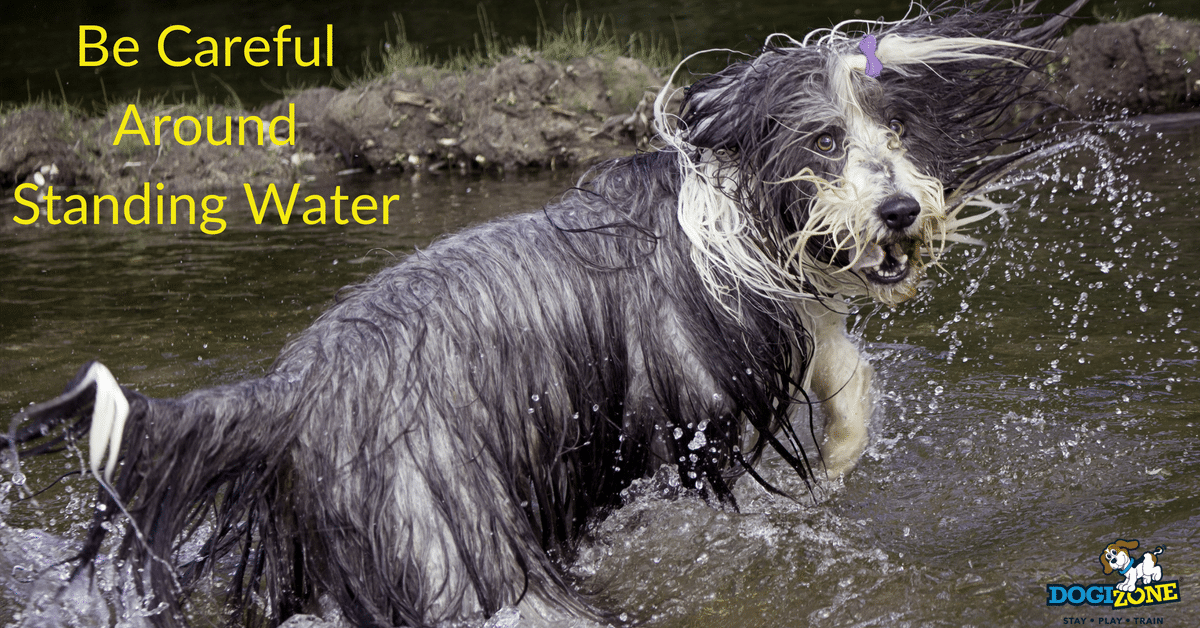Be Careful Around Standing Water
Standing Water Can Make Your Pups Sick
Like many pet owners, you might be wondering, can standing water make dogs sick?
Most dogs are very comfortable in the water. Some just like to wade around while others like to leap in and take off swimming. In the summer months, standing water in lakes and ponds may look like a good option to allow your dog to cool off, but there may be hidden bacteria and parasites in the water that can make a dog very sick.
These conditions may not be problematic for humans swimming in the same water, but there are some that can pose health issues. As with most bacteria and parasites, the health of the dog, or the person, exposed to the problematic organism will have a factor on how significant the potential symptoms may become.
Leptospirosis
Leptospirosis is a disease that is caused by exposure to the Leptospira bacteria. When seen under a microscope this looks like long strands of spiral spaghetti. These bacteria live predominantly in standing or still water, and it particularly likes areas where there is a lot of rainfall combined with warm weather over the summer months. The bacteria are also found in running water, such as rivers and streams.
Both dogs and humans can become infected with these bacteria. It enters the body through the mucous membrane in the nose, or it can also enter through any wounds on the body. These can be very slight, such as scratches or even insect bites.
Once inside the body, the bacteria can produce a variety of different symptoms. These can start out very mild and look like a digestive upset or the dog simply tired and lethargic. Without treatment can progress to vomiting, kidney failure, jaundice, shivering and pain throughout the dog’s body.
The good news is that it is often relatively easy to treat with antibiotics and care. The challenge is knowing to look for the bacteria. Tell your vet if your dog has been swimming and starts to exhibit these signs after being in the water.
Campylobacteriosis
This is another relatively common bacteria that is found in water and can be transmitted from dogs to humans. While it is commonly found in water where there is runoff through dog or animal waste, it can also occur if there is fecal contamination of a dog’s drinking water by an infected dog or animal. It is most problematic for puppies under six months of age or dogs with other health issues.
Infected dogs will start to show signs about 2 to 5 days after drinking the infected water. The most common symptoms are bloody diarrhea, high fevers, loss of appetite and signs of abdominal pain.
Treatment with antibiotics will be necessary on an outpatient basis for most dogs. Hydration treatments may be required, particularly if the dog or puppy is not eating or drinking.
Cryptosporidiosis
Cryptosporidium is not a bacterium, but rather a parasite. It has a very hard outer shell and can survive outside the body for extended periods of time. It can even live through exposure to chlorine-based cleaners, which makes it very difficult to manage once it is present in water sources.
The protected parasites in their hard shell are microscopic and are ingested by the dog when he or she is swimming or drinking. The first signs appear as lethargy, food refusal, and extreme weakness. Without treatment, the dog will develop severe diarrhea, and sometimes organ disease and failure, which will be life-threatening.
Many healthy dogs show mild signs of Crypo and recover without the need for specific treatment. Dogs with health conditions, senior dogs, and puppies will typically be treated with antibiotics and monitored for hydration levels.

